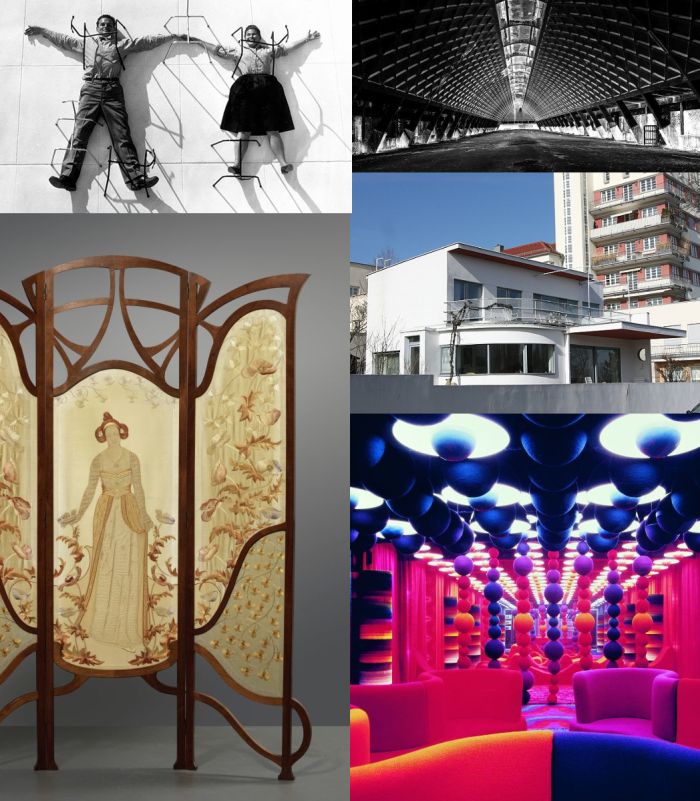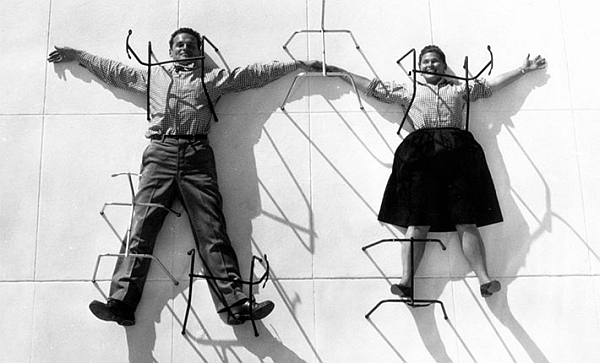5 New Architecture & Design Exhibitions for April 2018
According to the German philologist, mythologist, folklorist and definer of the Germanic Umlaut, Jacob Grimm, an old belief states that the Cuckoo never sings before the 3rd of April; and, “should you have money in your pouch when you hear him sing the first time, you will be well off all that year, if not, you will be short the whole year” 1
Much like the cuckoo, our five new architecture & design exhibitions recommendations for April 2018 begin with their songs after April 3rd; and should you have money in your pouch when in their vicinity, and use it to visit one, we can’t guarantee a year of financial wealth, but they all sound like providing not only a couple of hours entertainment, but a lifetime of joy through helping you develop your understanding of architecture and design, and thereby the world that surrounds you….
“Total home design harmony? Textile concepts from 1970-1990”, at the Textilmuseum, St.Gallen, Switzerland
Die totale Wohnharmonie – Total home design harmony – promised a 1971 adveritising slogan from the Swiss textile manufacturer MIRA-X. No mean claim, and when one considers that from 1971 until 1981 MIRA-X cooperated exclusively with the arch-colourist Verner Panton, a claim which, arguably, says quite a lot about 1970s understandings of “harmony”.
Certainly explains the question mark in the exhibition title.
Exploring the (hi)story of MIRA-X through the Panton decade and beyond to cooperations of very different conceptual and formal natures with Trix & Robert Haussmann, Alfred Hablützel and Jean-Philippe Lenclos, Total home design harmony? promises thereby to be not only an exploration of two decades of changing understandings of colours, patterns and textiles, but also of the role and function of textiles in interior design concepts, then and now. While also very nicely underscoring how important switching Copenhagen for Basel was for the career of Verner Panton.
Total home design harmony? Textile concepts from 1970-1990 opens at the Textilmuseum, Vadianstrasse 2, 9000 St. Gallen on Friday April 27th and runs until Sunday September 30th

The MIRA-X stand at the “Heimtextil” trade fair, 1971 in Frankfurt am Main, presenting the new collection from Verner Panton. (Photo © Panton Design, courtesy Textilmuseum St.Gallen)
“Art Nouveau in The Netherlands”, at Gemeentemuseum, Den Haag, Netherlands
Whereas Art Nouveau architecture and design is widely, popularly, understood in context of Germany, Belgium, Austria or the UK, its manifestations in other countries tends to be overlooked. Certainly undervalued.
Promising some 350 objects from across creative genres and from creatives such as, and amongst many others, Jan Eisenloeffel, Johan Thorn Prikker, Chris Wegerif and Anna Sipkema, Art Nouveau in The Netherlands aims to rectify that situation as regards the Netherlands; and for all promises explain the local, Dutch, responses to the cultural, social, economic and political changes taking place at the turn of the century, and thus allowing for a comparison of Dutch Art Nouveau with its, widely, popularly, better, understood neighbours. And thereby, hopefully, allowing for more realistic views on the nature of European architecture and design at that period.
Art Nouveau in The Netherlands opens at Gemeentemuseum, Stadhouderslaan 41, 2517 HV, The Hague on Saturday April 21st and runs until Sunday October 28th
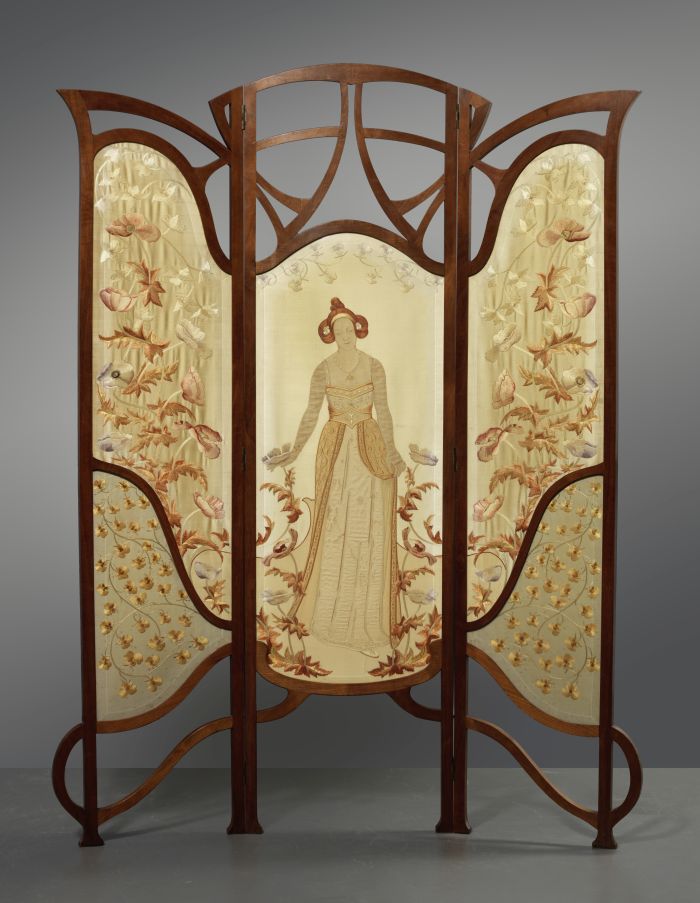
Threefold room divider Flower Queen by Carel Wirtz (1884-1944) executed by Atelier Hubert Fermin, The Hague (1902) (Photo courtesy Gemeentemuseum Den Haag)
“Modern Couples”, at Centre Pompidou-Metz, Metz, France
According to Marvin Gaye & Kim Weston for success and happiness “it takes two, baby”, the focus of the Centre Pompidou-Metz’s exhibition Modern Couples is however not “me and you”, but Man Ray & Lee Miller, Pablo Picasso & Dora Maar, Charles & Ray Eames and some 40 further creative couples who were active in the first decades of the 20th century and who through their creativity fundamentally influenced not only their own period, but all subsequent.
Although promising examples of the work realised by the selected couples, the focus of the exhibition is less those results and more the creative processes that led to them, the effects of the private relationship on the professional, the dynamic that existed in the partnership and thereby how the fact that they were couples influenced the development of a range of creative genres in the early 20th century. And therefore, ultimately, if it is true that “One can have a dream, baby, Two can make a dream so real”
Modern Couples opens at Centre Pompidou-Metz, 1, parvis des Droits-de-l’Homme CS 90490 57020 Metz Cedex 1 on Saturday April 28th and runs until Monday August 20th
“Kleine Häuser – großes Thema. Haben Einfamilienhausgebiete eine Zukunft?”, at the architekturgalerie am weißenhof, Stuttgart
A home of your own complete with garden, for many, most? a dream, when not a life’s aim. But a responsible and sustainable one? For all in context of the current directions of demographic, social and economic evolution. Is the flat not the more responsible solution?
Or can new approaches to the single family home, the integration of new technologies and new formal understandings make the single family house a typology which can evolve to meet the demands of changing society?
Does the single family home have a future? An if so in which context?
With Kleine Häuser – großes Thema [Small Houses – Large Subject] the architekturgalerie am weißenhof aim not only to explore the contemporary discussions concerning the single family house, but also contribute to wider discussions on the future of urban housing.
Kleine Häuser – großes Thema. Haben Einfamilienhausgebiete eine Zukunft? opens at architekturgalerie am weißenhof, Am Weißenhof 30, 70191 Stuttgart on Thursday April 26th and runs until Sunday July 1st
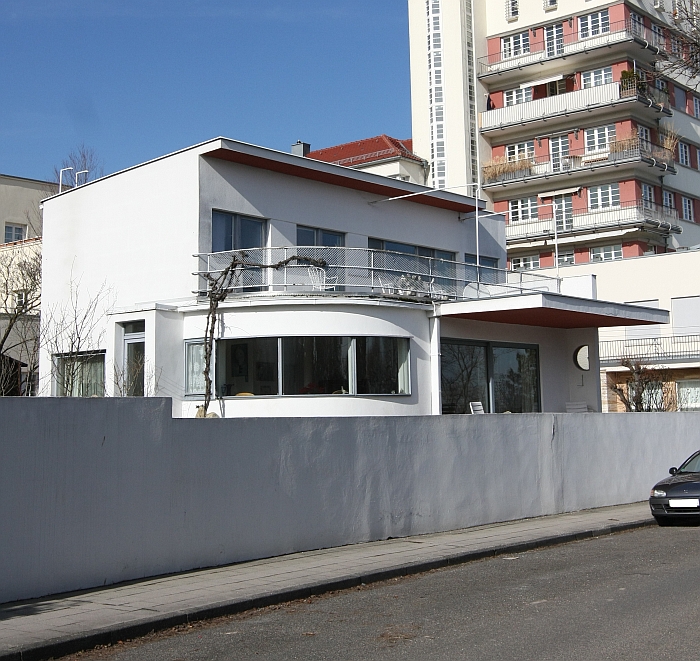
Weissenhofsiedlung Stuttgart, House 33 by Hans Scharoun. A single family house. But a future-orientated model?
“Image Spaces: Biology and Building”, at Museum für Fotografie, Berlin
That nature always has the best construction solutions is well understood. However before architects, engineers and designers can employ them, the how and why of the solutions must be equally well understood. Aiming to achieve not only such but also help biologists fundamentally understand natural structures the engineer Frei Otto and biologist Gerhard Helmcke established in 1961 the interdisciplinary research team Biologie und Bauen – Biology and Building – at the Technische Universität Berlin.
Among the tools used by the research group were 2D and 3D imaging, tools taken as a starting point by the Universität der Künste Berlin and the Technische Universität Berlin to explore the wider issue of photography and imaging in scientific research, from the work of Otto and Helmcke up to contemporary projects.
Divided into three sections exploring Analogy, Stereo Images and Data Processing respectively and promising a mix of technical, scientific images and works of a freer, more artistic nature Biology and Building doesn’t sound like being a design exhibition in the biblical sense; does however sound like being the sort of which helps underscore the importance of interdisciplinary approaches to architecture and design.
Image Spaces: Biology and Building opens at the Museum für Fotografie, Jebensstraße 2, 10623 Berlin on Friday April 20th and runs until Monday May 21st
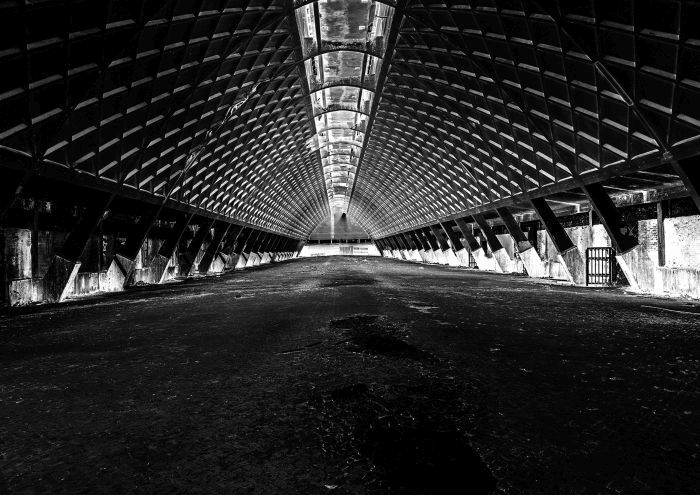
Salt Storage Depot by Pier Luigi Nervi, Tortona, Italy (Photo courtesy Staatlichen Museen zu Berlin)
1. Jacob Grimm “Teutonic mythology” translated from the fourth edition. Notes and appendix James Steven Stallybrass, Vol. II. George Bell & Sons, London 1883.
Tagged with: Architekturgalerie am Weißenhof, Art Nouveau in The Netherlands, Berlin, Centre Pompidou-Metz, Den Haag, Metz, Modern Couples, St. Gallen, Stuttgart, Textiles, Verner Panton
